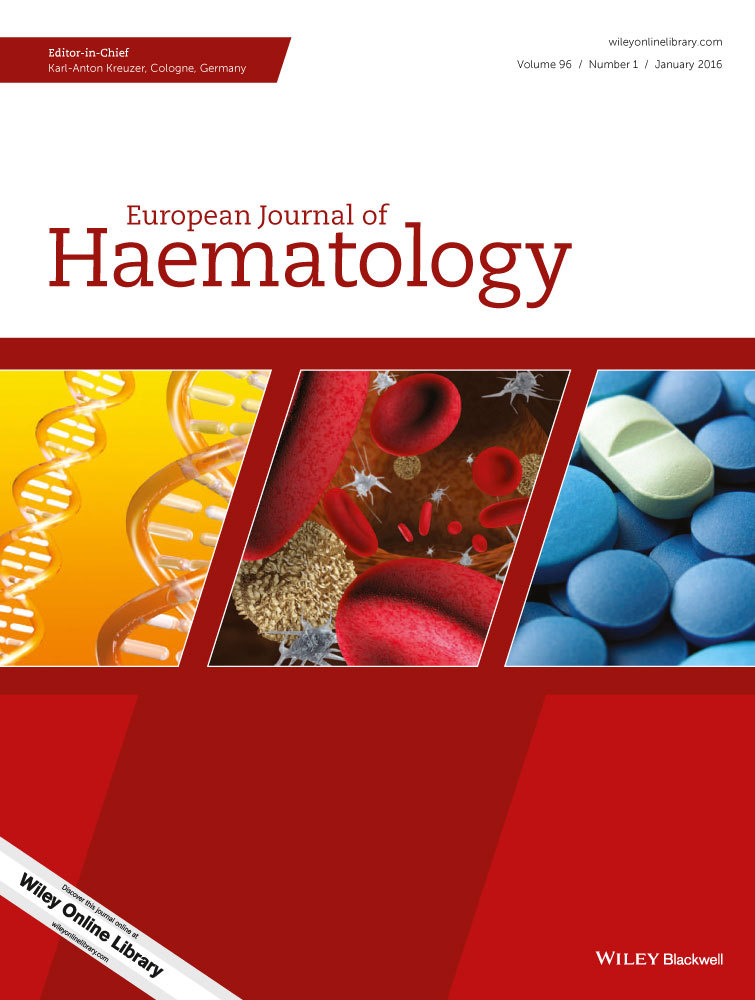Masked polycythaemia vera: presenting features, response to treatment and clinical outcomes
Abstract
Masked polycythaemia vera (PV) has been proposed as a new entity with poorer outcome than overt PV. In this study, the initial clinical and laboratory characteristics, response to treatment and outcome of masked and overt PV were compared using red cell mass and haemoglobin or haematocrit levels for the distinction between both entities. Sixty-eight of 151 PV patients (45%) were classified as masked PV according to World Health Organisation diagnostic criteria, whereas 16 (11%) were classified as masked PV using the British Committee for Standards in Haematology (BCSH). In comparison with overt PV, a higher platelet count and a lower JAK2V617F allele burden at diagnosis were observed in masked PV. Patients with masked PV needed lower phlebotomies and responded faster to hydroxcarbamide than those with overt PV. Complete haematological response was more frequently achieved in masked than in overt PV (79% vs. 58%, P = 0.001). There were no significant differences in the duration of haematological response, the rate of resistance or intolerance to hydroxycarbamide and the probability of molecular response according to type of PV (masked vs. overt). Overall survival, rate of thrombosis and major bleeding, and probability of transformation was superimposable among patients with masked and overt PV.




